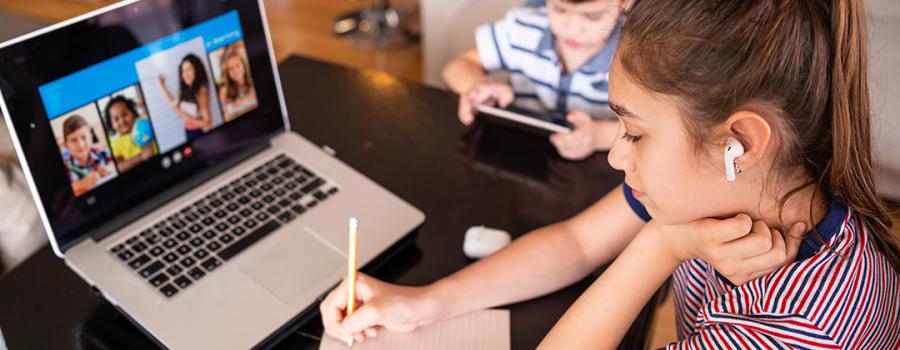As summer ends the reality (whether parents, students, or school systems like it or not) is that most students are headed toward a mostly or entirely virtual fall. This time, instead of a sudden switch to remote learning, everyone has had some time to consider the best way to educate children virtually.
Even if your school is headed back for in-person instruction, given the persistence of COVID, it would be a good idea to prepare for the likely return of remote learning. The usual “back to school jitters” has morphed into actual angst about being able to provide children with everything they need in order to thrive this academic year.
The best advice I have found comes from Sal Khan, the founder of Khan Academy, a free online non-profit education website, “Don’t try to replicate everything, that is just setting yourself up for disappointment. Focus on the basics first and get your legs under you.”
It is important to recognize that parents, and especially working parents, may not be able to truly “home school” children this fall. And, the most important thing that you can do for yourself and your child is to prioritize the “must do” over all other expectations.
For those parents and families who are preparing for a remote learning environment this fall, keep the following in mind:
- Consider the needs of your child and find resources to meet their needs. If your child has special needs or learning differences, make sure that you have all the online and local educational resources at the ready to help your child. Make sure to reach out to your local school and school system, there may be resources that you were not aware of that can be made available to you.
- Take account of the amount of time each child will need each day and build that into your schedule. But, don’t overlook the amount of help that older children can provide to younger siblings. You may even be able to enlist adolescents from your neighborhood to provide tutoring or supplemental learning both online using Zoom, or in your front yard with appropriate social distancing and proper precautions.
- Social-emotional learning is paramount. Make sure that your child is emotionally centered and doing well. If you can provide extra assistance, or stress reducing activities, those will go a long way toward their overall success. Centervention is a wonderful and free online social emotional learning site that has activities and information for children K-8. Boston’s Children’s Hospital has a list of free social emotional guides and resources for educators and parents to help children during this transition. And, lastly, the Character Tree is giving teachers a way to share character education videos and downloadable resources with parents to use at home.
- Use this time to help children learn time management skills. Help them with writing task lists each day and review their success or lack of success with them each evening. Help children to problem solve around ways to be more productive during the day so they have more time for outdoor play and family socialization in the evenings.
Above all else, remember to give both yourself as a parent/guardian and your child grace. Everyone is navigating their way through the pandemic and nothing has been easy for anyone. In the end, children will hopefully learn how to be resilient and manage their way through adversity.
This blog article was contributed by Aeva Doomes, MD, Medical Director for Nexus-Woodbourne Family Healing.
Nexus Family Healing is a national nonprofit mental health organization that restores hope for thousands of children, families, and adults each year through services in community mental health, crisis and stabilization, foster care and adoption, and residential treatment. For over 50 years, we’ve used innovative, personalized approaches to heal trauma, break cycles of harm, and reshape futures. We believe every child is worth it — and every family matters. Access more resources at nexusfamilyhealing.org/resources.
